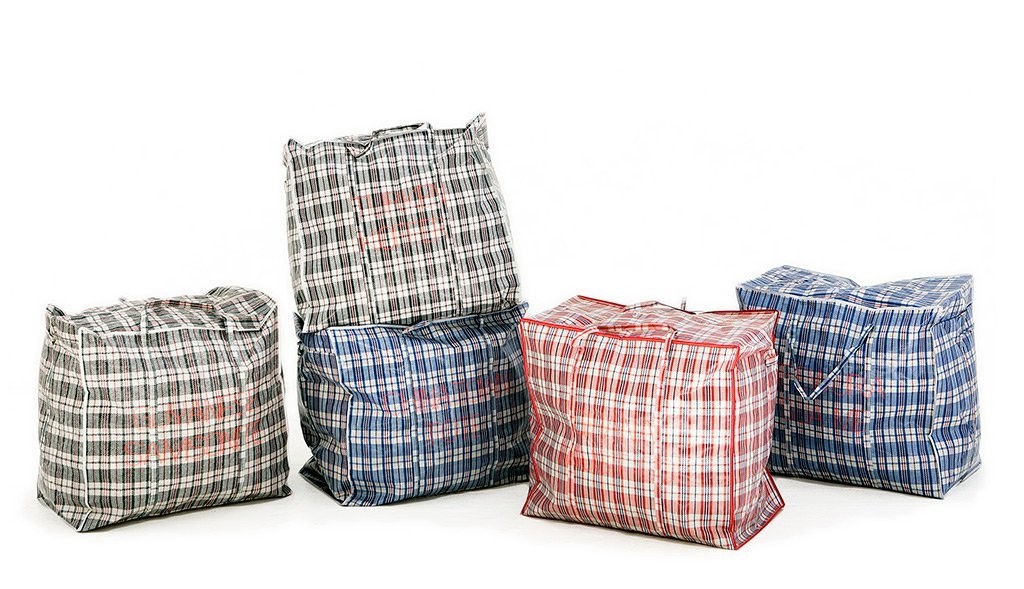The bag known as “Ghana Must Go” is a symbol of a painful and turbulent chapter in African history. This seemingly innocuous bag, with its distinctive check red pattern, has a deep and ugly history that is intertwined with political turmoil, xenophobia, and a dark period in the history of Nigeria.
The term “Ghana Must Go” does not refer to the country of Ghana itself but to a type of bag that became infamous in Nigeria in the 1980s. These bags are made from woven polypropylene fabric and feature a distinctive red, yellow, and green check red pattern. The bags are typically large, sturdy, and utilitarian in design. They are commonly used for transporting goods, especially in markets and for household storage.
The history of the “Ghana Must Go” bag is closely linked to a tragic and divisive event in Nigerian history. In 1983, Nigeria was under the leadership of President Shehu Shagari, and the country was grappling with economic and political challenges. The Nigerian economy was in a state of decline, with inflation soaring, and unemployment rising. The political landscape was characterised by widespread corruption and a lack of transparency.
One of the most significant and controversial policies of President Shehu Shagari’s administration was the expulsion of illegal immigrants. This policy was driven by economic concerns, as the government believed that immigrants were taking jobs that should be reserved for Nigerian citizens. Many of these immigrants were of Ghanaian descent, and they were living in Nigeria for various reasons, including seeking better economic opportunities.
The government’s decision to expel these immigrants was sudden and brutal. Thousands of Ghanaians and other foreign nationals were rounded up and forcibly deported from Nigeria. They were given short notice to leave the country, and many of them had to pack their belongings in a hurry. This is where the “Ghana Must Go” bag comes into the picture.

The “Ghana Must Go” bag quickly became associated with the mass exodus of Ghanaians and other immigrants from Nigeria. These individuals, who had built their lives in Nigeria, were suddenly forced to abandon their homes, businesses, and possessions. In the chaos of the expulsion, they needed a way to carry their belongings, and the distinctive check red bags became their solution.
The bag’s name, “Ghana Must Go,” emerged from the fact that it was widely used by Ghanaians who were among those being expelled. The bag represented not only the forced eviction of thousands of people but also the deep-seated xenophobia and anti-immigrant sentiments that had taken root in Nigerian society. The use of the bag as a means of carrying one’s life possessions was both a practical necessity and a symbol of the discrimination and hostility faced by these immigrants.
The “Ghana Must Go” bag, as a symbol of displacement and discrimination, carries immense emotional weight for those who lived through this period. It is a reminder of the pain and trauma experienced by countless families who were abruptly uprooted from their homes and communities. The bag represents the loss of livelihoods, the tearing apart of families, and the rupture of social ties.
The term “Ghana Must Go” itself has become a loaded and contentious phrase in the history of Nigeria and Ghana. It serves as a reminder of a dark chapter in the relationship between the two countries, as well as a symbol of the complexities of immigration, identity, and belonging.
In the years following the mass expulsion of immigrants from Nigeria, there have been efforts to mend the strained relationship between Nigeria and Ghana. Diplomatic channels and negotiations have been used to address the grievances and heal the wounds caused by the “Ghana Must Go” incident. Both countries recognised the need to move beyond this painful history and rebuild their ties.
While reconciliation efforts have been made, the scars of the past still linger in the collective memory of both nations. The “Ghana Must Go” bag, as a symbol of this painful episode, remains a testament to the enduring impact of this period in West African history.
Despite its painful history, the “Ghana Must Go” bag has also found a place in popular culture. It has been featured in literature, music, and art, serving as a symbol of resilience and survival. The bag is sometimes used as a metaphor for the strength and adaptability of the people who faced adversity during the mass expulsion.

In literature, the bag has been referenced in works that explore themes of displacement, identity, and the immigrant experience. In music, it has appeared in songs that touch on the resilience of individuals and communities who have faced adversity. In art, it has been incorporated into visual pieces that seek to capture the complexity of the “Ghana Must Go” narrative.
The bag known as “Ghana Must Go” is more than just a simple piece of luggage. It is a powerful symbol of a dark and painful period in the history of Nigeria and Ghana. The mass expulsion of immigrants from Nigeria in the 1980s left a lasting mark on the collective memory of both nations, and the bag serves as a tangible reminder of the trauma and discrimination faced by those who were forcibly uprooted from their homes.
While the wounds of the past have not been entirely healed, efforts have been made to reconcile and rebuild the relationship between Nigeria and Ghana. The “Ghana Must Go” bag, with all its emotional weight, continues to be a complex and evocative symbol in the cultural and historical landscape of West Africa.
As we reflect on the history behind the bag Ghana Must Go, we are reminded of the importance of acknowledging and learning from painful episodes in our past. It is through understanding and reconciliation that we can move forward and build a more inclusive and compassionate future for all.
Sources
- https://atavist.mg.co.za/ghana-must-go-the-ugly-history-of-africas-most-famous-bag
- https://en.wikipedia.org/wiki/Deportation_of_West_African_migrants_from_Nigeria#:~:text=Legacy-,%22Ghana%20Must%20Go%22%20bag,Must%20Go%22%20during%20the%20migration.
- https://www.bbc.com/news/world-africa-54871584
- https://nextcashandcarry.com.ng/product/ghana-must-go-bag-waterproof-storage-bag/




